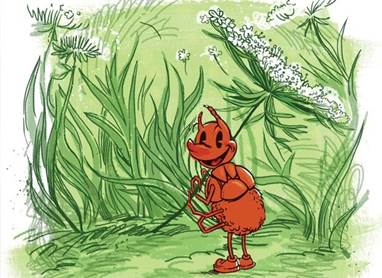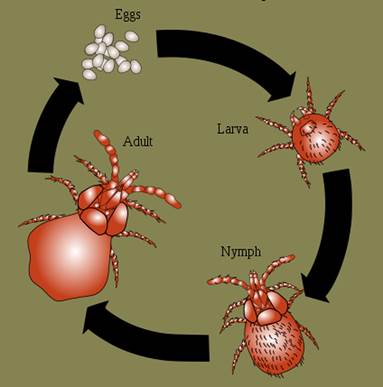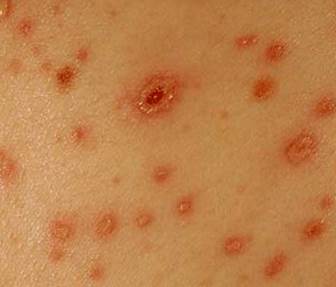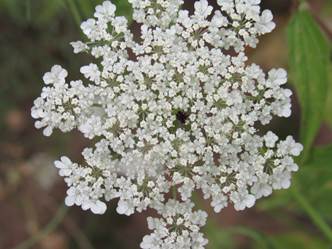Chigger, Chigger, Scratch, Scratch: A Little Scratch Can Go a Long Ways
Chigger, Chigger, Scratch, Scratch: A Little Scratch Can Go a Long Ways
By Bill Willis and Matt Jordan
August 2, 2018

- The scratch isn't money but rather the result of an arachnid bite
- Mite larvae are parasites of birds, small mammals, reptiles, and humans
- They inject digestive enzymes that liquify cells that are then sucked from the wound
- They itching and redness caused by the bite is a histamine (allergic) response
- The human bite side effects of redness and itching may take weeks to go away
Most people have experienced returning from walking in the woods, fields, or lawns only to experience an itching sensation several hours later, on their ankles, legs and around their waistline. Failure to use a good repellant has only compounded the problem. The attack most likely came from the transfer of chiggers i.e. mites, from the vegetation to clothing then to skin.

Courtesy of Shutterstock
What are chiggers?
Chiggers, like spiders, scorpions and ticks are arachnids having four pairs of legs. However, the life cycle for most chiggers includes a six-legged parasitic larva stage. The other stages are predatory. Some mites like the concrete mites on the NIEHS campus are predatory in all stages and therefore beneficial.
They help keep other mites and insects in check.
What do chiggers look like?
If you had macroscopic eyes you might see a reddish, ovoid, hairy, six-legged, 0.25mm long mite, like those in the life-cycle drawing below.

Courtesy of Bugboy52.40 - Wikimedia Commons
Do all chiggers bite humans and can pets be affected?
Not all chigger larva are parasites, rather the larva of some species eat pollen, or are predators of other mites. Humans and pets are susceptible to being bitten, but there are other more preferred hosts such as birds, rodents, or small mammals. Chiggers feed for several days then drop off their host. Unlike other mammals, humans appear to have a much more intense physical reaction to the enzymes that chiggers produce. Scratching or washing the area of the bite easily dislodges the chigger whether they are done using you as a buffet or not.
How will I know that I’ve been bitten?
A reliable method is to feel and see the reaction their puncture wound has on your skin. The site of the chigger bite will begin to itch within three to six hours and the temptation to scratch increases dramatically. The worst itching will last a couple of days then gradually subside. The red mark often with a raised pustule center slowly goes away over the next week if the skin isn’t broken or infected.
What does the bite area look like?
The chigger creates a puncture wound but doesn’t burrow under the skin, as some people suggest. It can take about an hour for the chigger to reach a feeding spot (thin and moist skin) and begin feeding. Unlike ticks and mosquitos, which can penetrate many types of skin, chiggers have relatively weak mouth muscles and cannot physically penetrate skin that you normally have exposed to the outside world, such as your arms, legs, and face. They are forced to target areas that are usually protected by fabrics or other body parts. The chigger penetrates the skin with its mouthpieces. It then injects an enzyme into the wound that breaks down the skin cells that it then extracts. The red mark often with a raised pustule center slowly goes away over the next week if the skin hasn’t become infected.

Courtesy of Inside the Clinic
What should be done if bitten?
Try to avoid uncontrolled scratching of the site, especially if a pustule (bump) has formed. Apply an antihistamine cream or hydrocortisone ointment to the site. Calamine lotion will help alleviate some of the itching. Scratching causes additional irritation and can lead to secondary infection at the site.
Can the terms chigger and mite be used interchangeable?
In local terms, the answer is yes. A chigger by any other name is still a chigger. It is the name often given the larva stage. In some regions they are known simply as “redbugs,” not to be confused with bedbugs.
Where are the chiggers?
Chiggers are found in tall grassy areas such as near wooded areas, fields, and in lawns, where they live near the soil surface. Heat and high humidity increase chigger populations. Keeping areas mowed helps reduce numbers but is a not guarantee of preventing bites. Chiggers can be concentrated in one area and not in an adjacent one. As the need for nourishment increases, the chigger moves higher and higher on the vegetation and waits for the host. The adults will winter in the soil.
Are there any plants that are chigger magnets?
Yes, many people think that there is a “chigger weed” and it’s commonly found on campus. It is known as Queen Anne's Lace or wild carrot. There are plant look-a-like plants that are poisonous, so be careful and learn which plant is which.

Are chiggers known to cause any diseases?
No diseases have been associated with chiggers.
What are the prevention measures that can be taken before going outside?
Tuck pant legs into your socks. Wearing shorts and being barefoot are open invitations to the chiggers that it’s only a matter of time before the table is set. Use a good repellant, and apply to shoes, pant legs and socks. Upon returning from an outing, shower, and scrub well. Many chiggers will be removed.
Does mosquito, tick, fly DEET (N, N-diethyl-meta-toluamide) work on stopping chiggers from biting?
Yes. it will serve as a repellant, if applied properly.
What are some myths and facts about chiggers?
- Nail polish will kill an embedded chigger. False – Two things wrong: the chigger doesn’t burrow under the skin and the chigger will usually be gone by the time polish is added.
- Chiggers are insects. False – They are arachnids.
- Chiggers can bite multiple times. False – Chiggers get just one shot at feeding on you. After they bite once they cannot bite you or anyone else again.
- Only the six-legged larval stage is a threat to human. True – The other stages aren’t.
- Chiggers are known to spread human diseases. False
- All “redbugs” are chiggers. False – The word “redbugs” is a common term for any red bugs including bedbugs.



